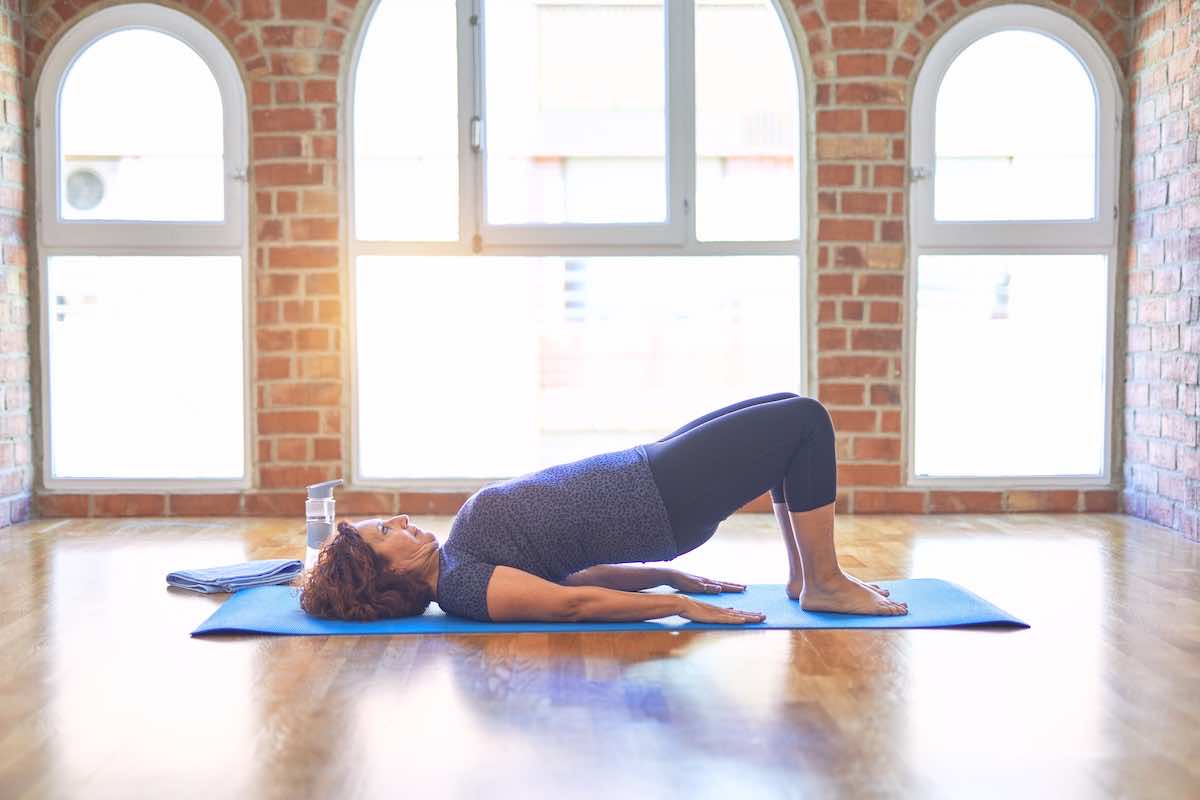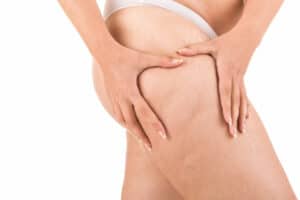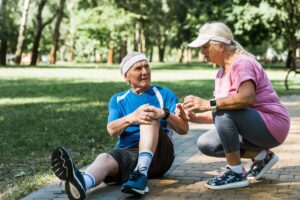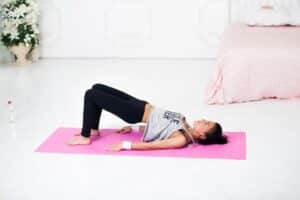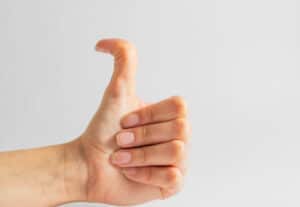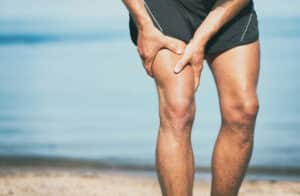Free download: Top 10 Natural & Easy Remedies for Joint Pain from Home. Learn these helpful remedies.
Estimated Reading Time: 7 minutes read
Pilates has become an increasingly popular form of exercise for older adults in recent years. With its low-impact movements and focus on core strength, balance, and flexibility, Pilates is an excellent way for people over 60 to stay active and improve their overall health and wellness.
Many older adults may be hesitant to try Pilates due to physical limitations or health conditions. In this article, we will explore the benefits of Pilates for older adults and provide tips on how to incorporate Pilates into a daily routine.
Table of Contents
Benefits of Pilates for Older Adults
Pilates can offer a wide range of benefits for seniors, including:
- Improved balance and coordination
- Increased flexibility and range of motion
- Reduced joint pain and stiffness
- Stronger core muscles and improved posture
- Reduced risk of falls and injuries
- Improved mental health and well-being
One of the great things about Pilates is that it can be easily modified to accommodate different abilities and health conditions. For example, older adults who have difficulty getting up and down from the floor can use a chair as a prop for seated exercises, while those with balance issues can use a wall or other stable surfaces for support.
Tips for Incorporating Pilates into a Daily Routine
Here are some tips for seniors looking to incorporate Pilates into their daily routines:
- Start slowly and with simple exercises. It’s essential to build up strength and flexibility gradually to avoid injury.
- Work with a certified Pilates instructor who can tailor exercises to your specific needs and health conditions.
- Use props like resistance bands or balls to aid movements and make exercises more accessible.
- Focus on breathing during exercises. Pilates emphasizes deep breathing, which can help reduce stress and improve overall well-being.
- Make Pilates a standard part of your routine. Consistency is key when it comes to reaping the benefits of Pilates.
12 Pilates Exercises to Help Older Adults Improve Balance & Mobility
1. Scapular Retraction
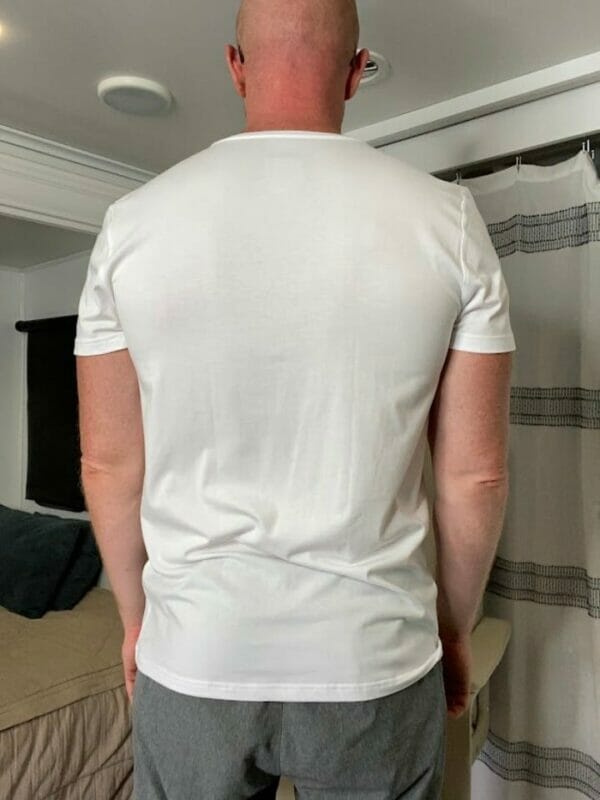
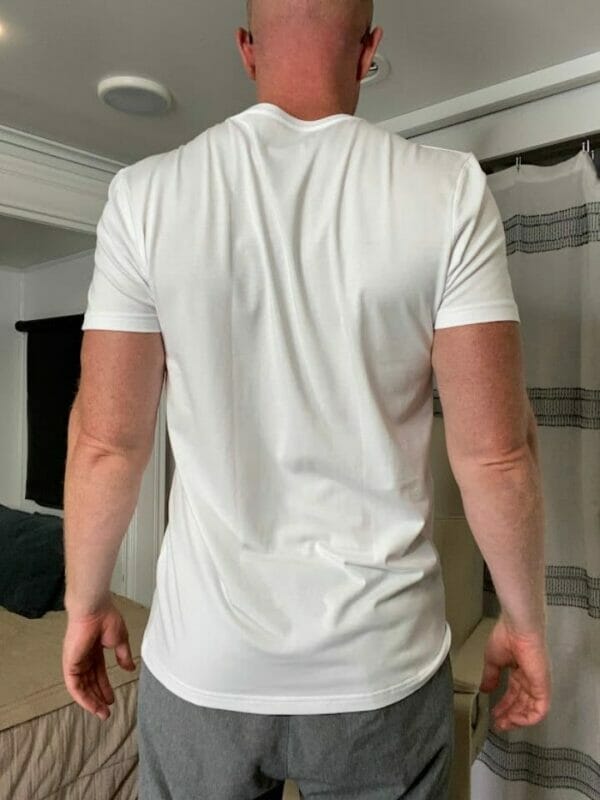
- Try to sit as straight as possible in a sitting or standing position. Aim to position the head in as much of a forward and neutral position as possible.
- Gently pull the shoulders back and squeeze the shoulder blades together.
- Hold for 5 seconds, then relax.
- Repeat 10 repetitions for 3 sets.
2. Diaphragmatic Breathing
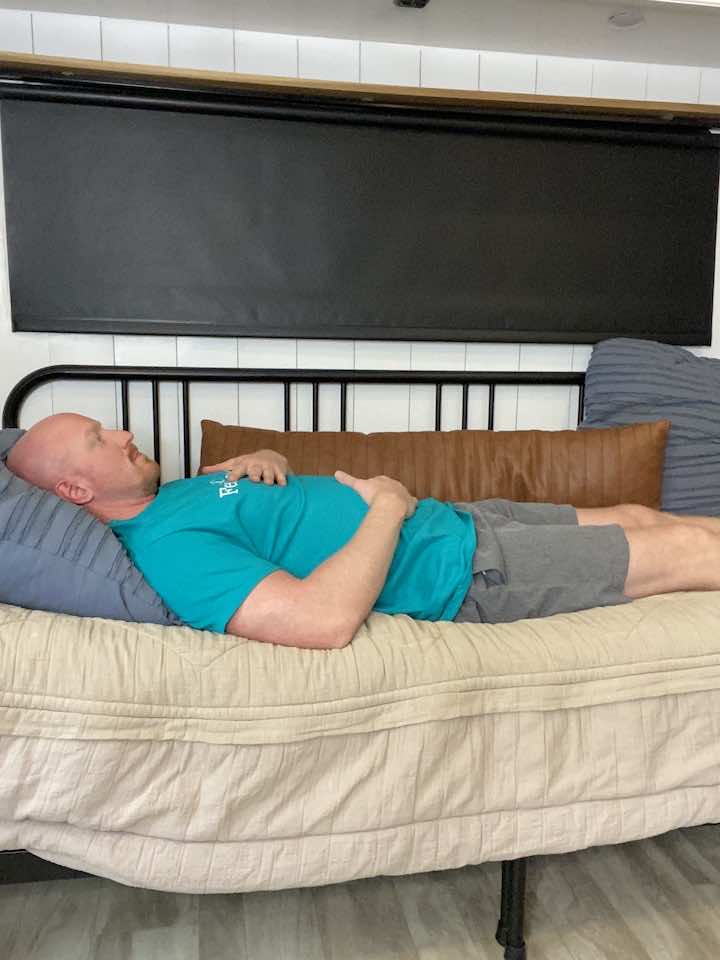
- Lay on your back comfortably, and your knees could be bent or straight. Bent knees will support your lower back better.
- Place one hand on your chest and one on your stomach, and close your eyes.
- Take a deep breath in through your nose and feel which hand rises up more. When we’re stressed, you often feel more movement on the hand on the chest, indicating chest breathing. The goal is for you to switch to feeling the hand on the belly rise and fall more, indicating diaphragmatic breathing. This can take some time to accomplish. Imagine breathing in through your nose and filling up a balloon in your belly.
- After taking a deep breath through your nose, breathe out through your mouth with pursed lips like you’re blowing out a candle.
- Continue taking 15 deep breaths through your nose, filling up the balloon in your belly, then breathing out through your mouth and feeling the hand on your belly drop as you deflate the balloon.
3. Abdominal Bracing
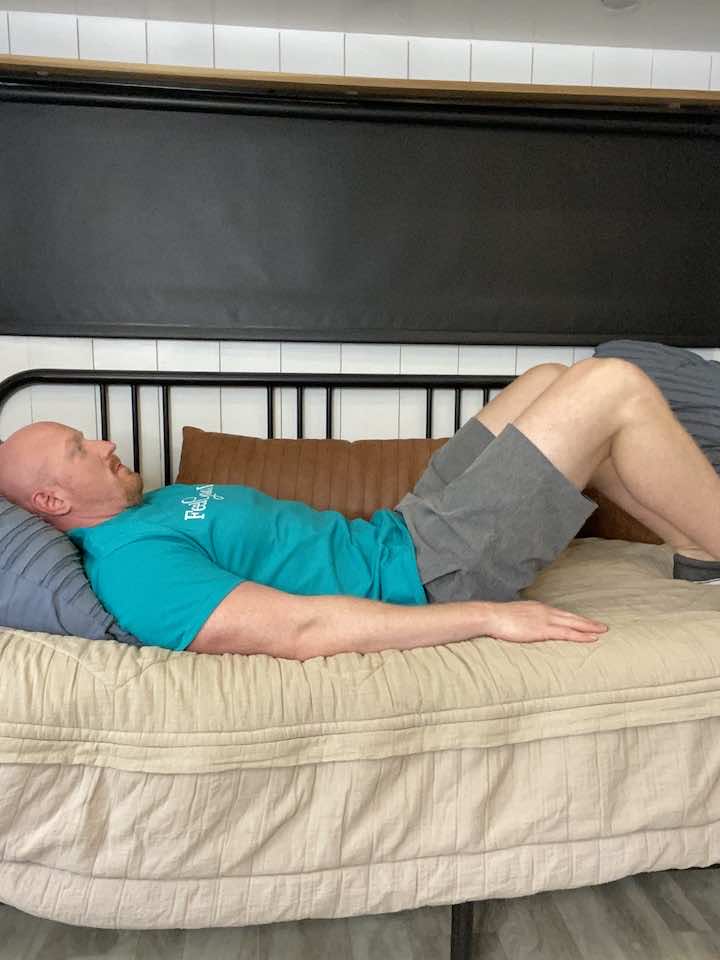
- Begin on your back, and knees bent, and feet flat on the floor.
- Exhale and draw your belly button towards your spine (as if a string was pulling on the inside of your belly button from the ground).
- Hold for 5 seconds before relaxing.
- Repeat 10 repetitions for 3 sets.
4. Marching Core
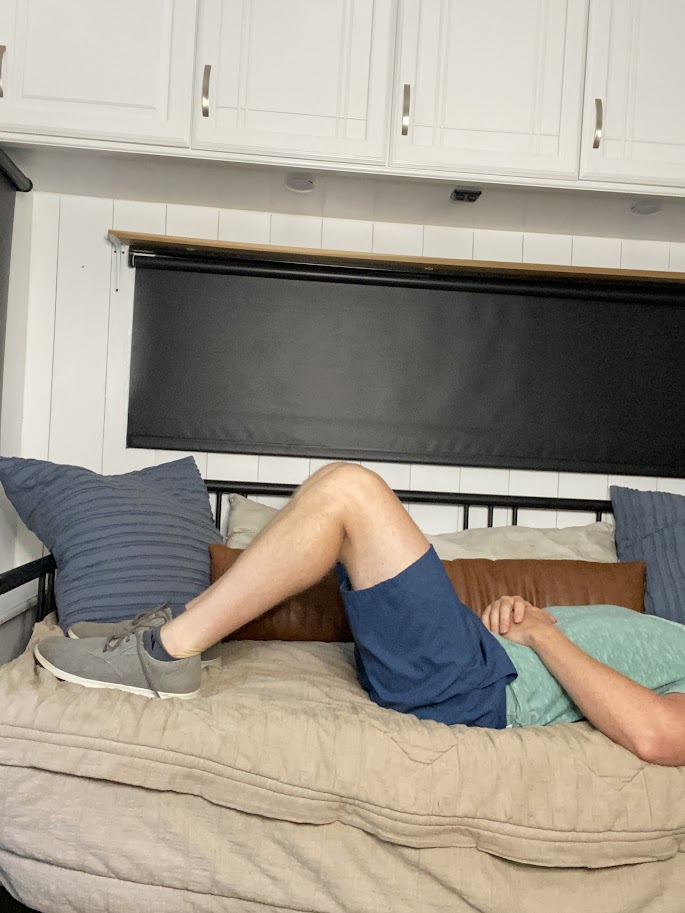
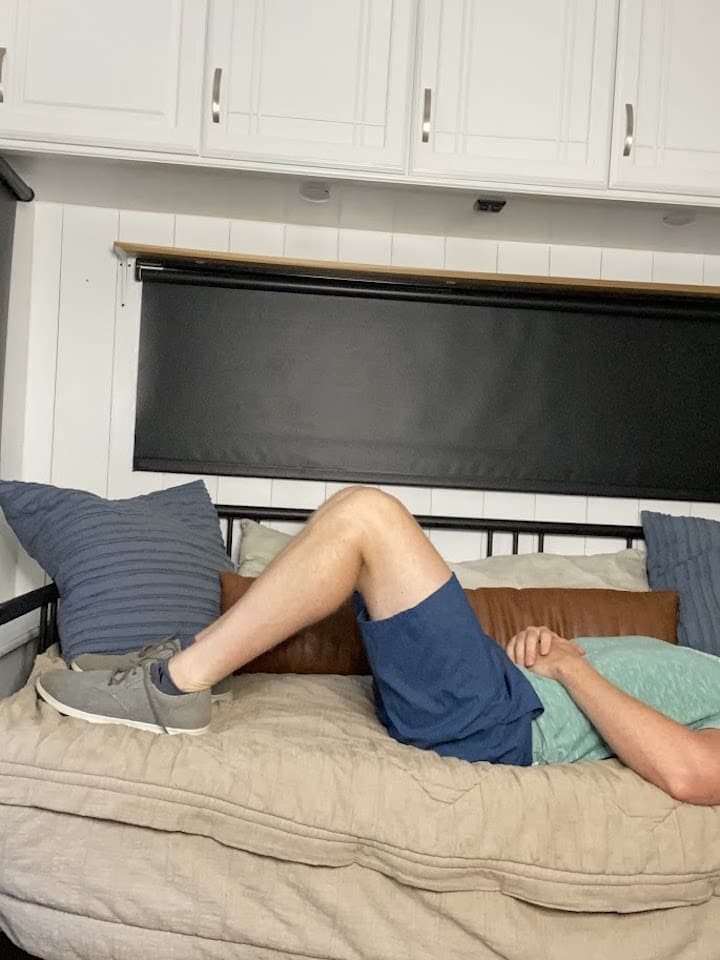
- Starting position: Laying flat on your back (on your bed, couch, or floor), with your knees bent and feet flat on the surface.
- To activate your transverse abdominis, try to pull the belly button down towards the surface, gently flattening the back simultaneously. This will help to brace the core.
- While keeping this braced core (don’t forget to breathe!), lift one knee towards your chest, like a march, then lower back down to the surface.
- Repeat 10 repetitions for 3 sets.
- Perform on the opposite leg.
5. Bent Knee Fallouts
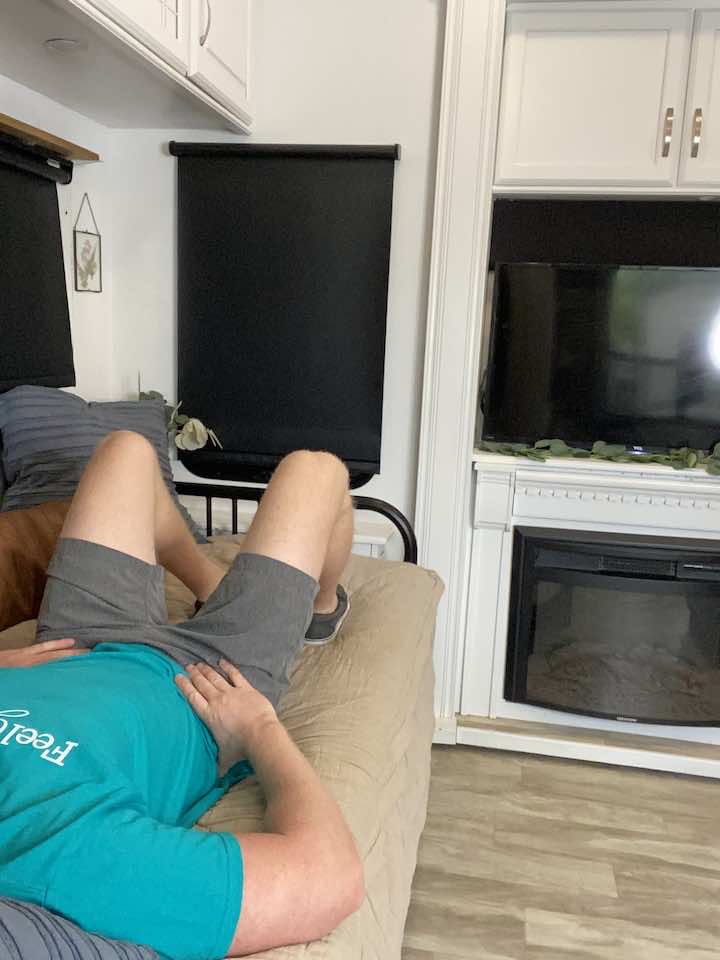
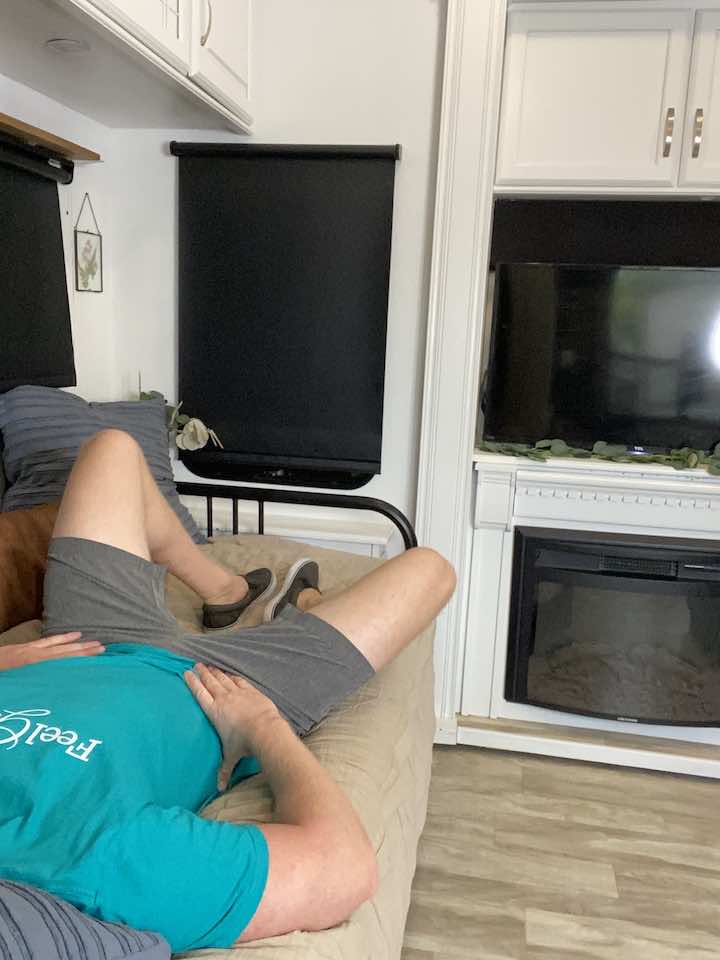
- Lie on your back with both knees bent and your hands on your hips.
- Engage your core by bracing your muscles, so they are like a trampoline surface. It’s a subtle movement and shouldn’t feel like you’re pushing your core up or sucking your core in. Just a soft brace as though someone was about to place a weight on your belly.
- Keep your left knee frozen where it is, then let your right knee lower to the side 45 degrees and come back to the center. Keep your core engaged the whole time. You can monitor for control by using your hands on your hips. If your hip drops to the right side as the right leg moves, you’re not keeping your core engaged. The goal is for your hips to stay perfectly still while you perform this asymmetrical movement.
- Perform 10 repetitions for 3 sets on the right side, then repeat on the left.
6. Bridges
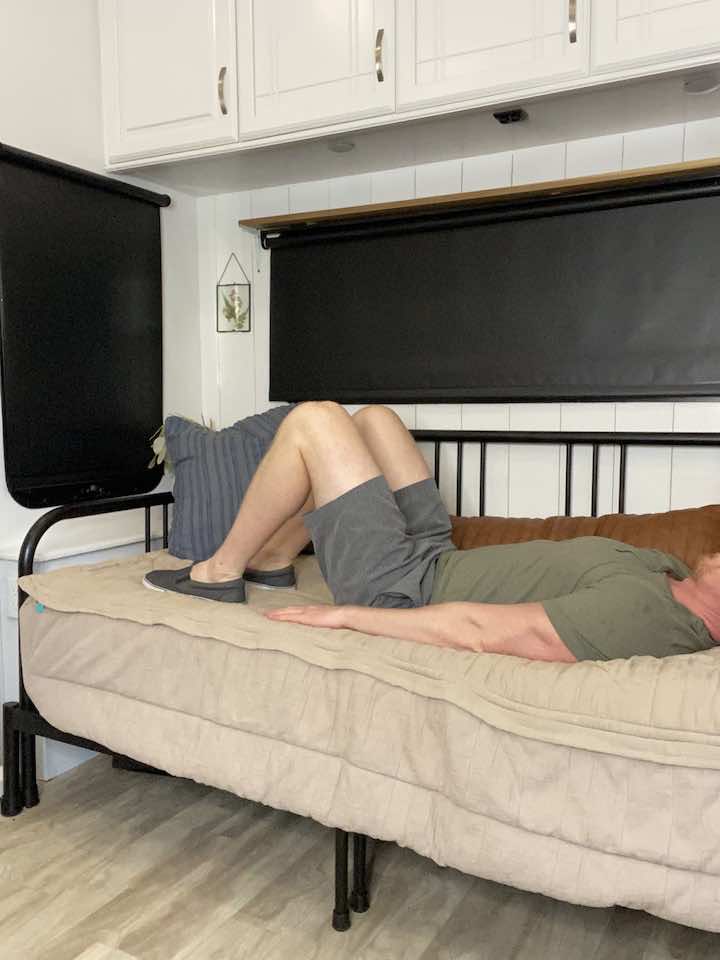
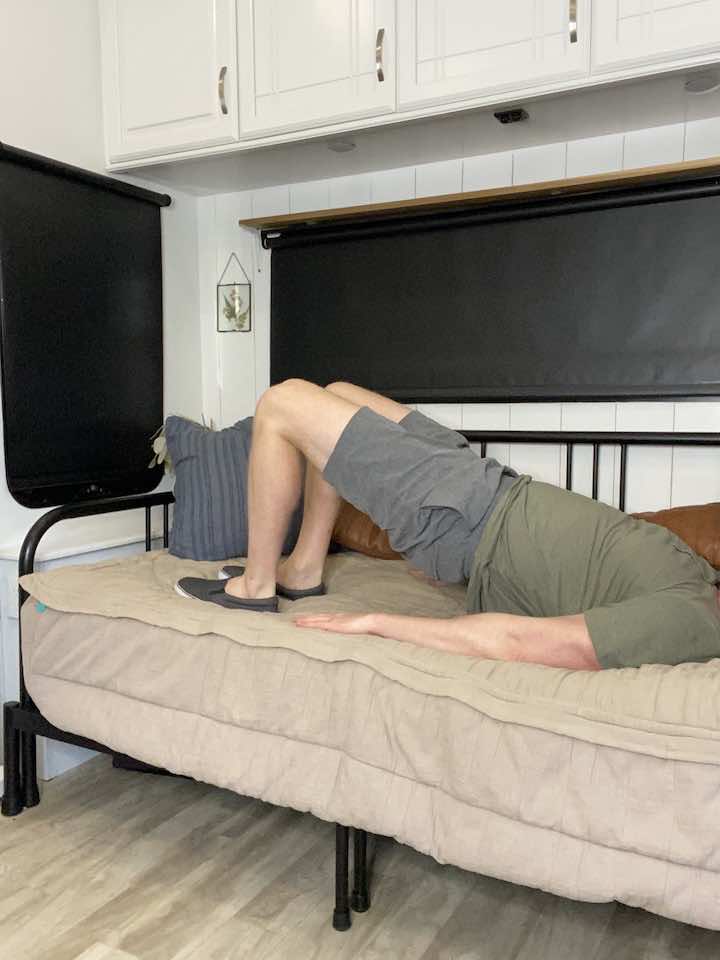
- Lie on your bed or floor (a bed is better if you have difficulty getting on the floor). Again, ensure your knees are bent at about 90 degrees and your feet are flat on the floor.
- Lift your hips off the ground, using your hands to help push your hips up if needed.
- Slowly lower your hips back down to the bed or floor and repeat for 10 repetitions for 3 sets.
7. Clamshells
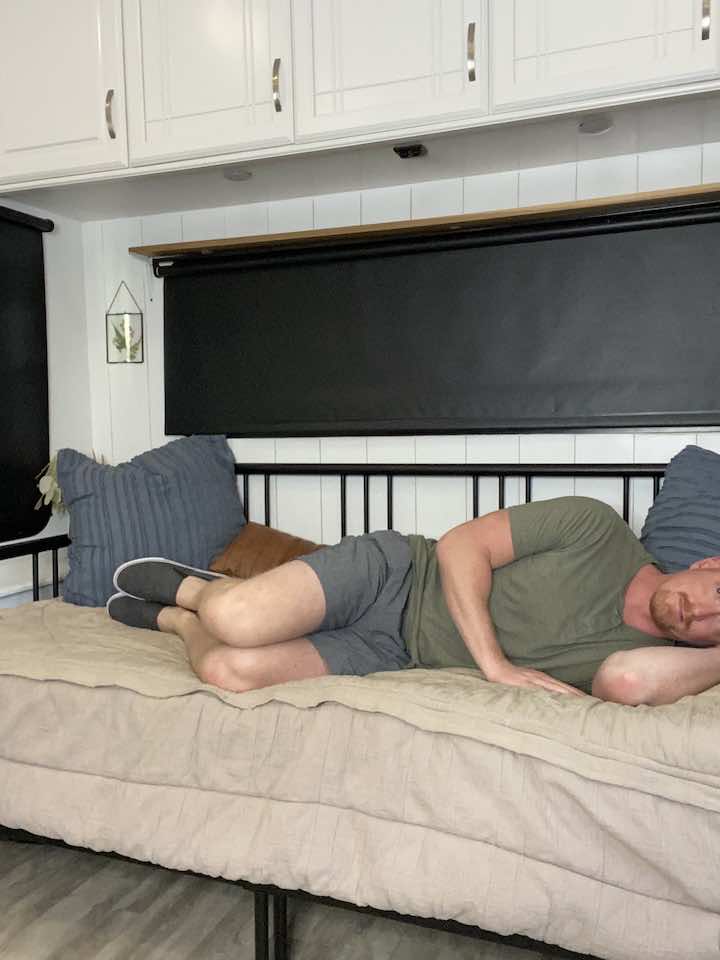
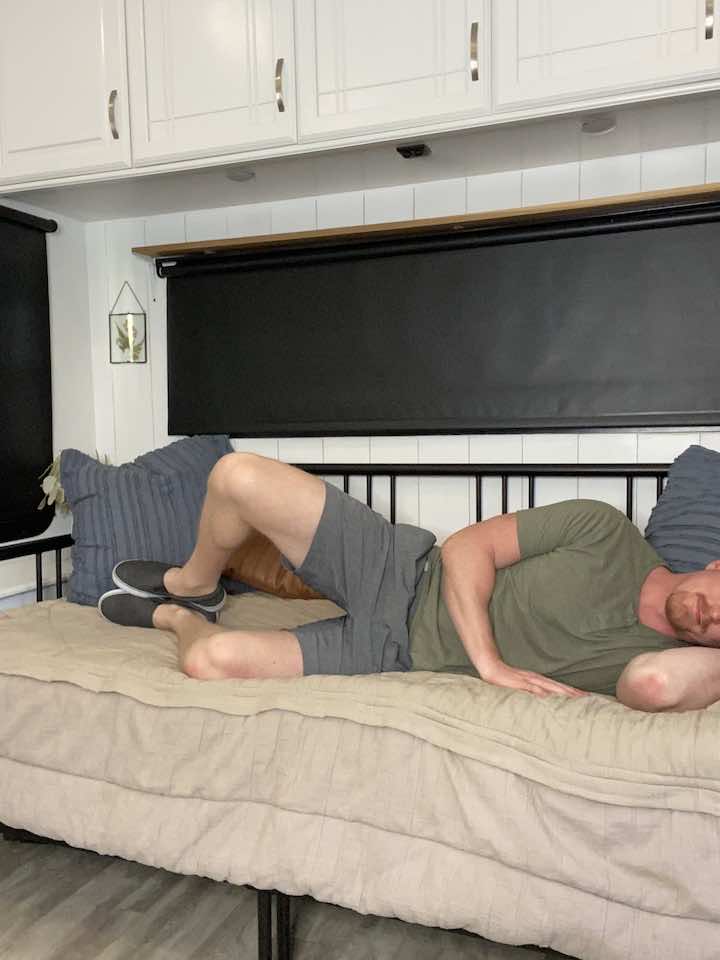
- Lie on your side with your legs bent at a 90-degree angle and your feet together.
- Keep your feet and spine in line.
- Keep your core tight and hip stable, lifting your top knee as high as possible.
- Lower your top knee to the starting position, maintaining a contraction in your glutes and lower abs.
- Repeat the movement for 10 repetitions for 3, then switch to the other side.
8. Side Lying Leg Lifts
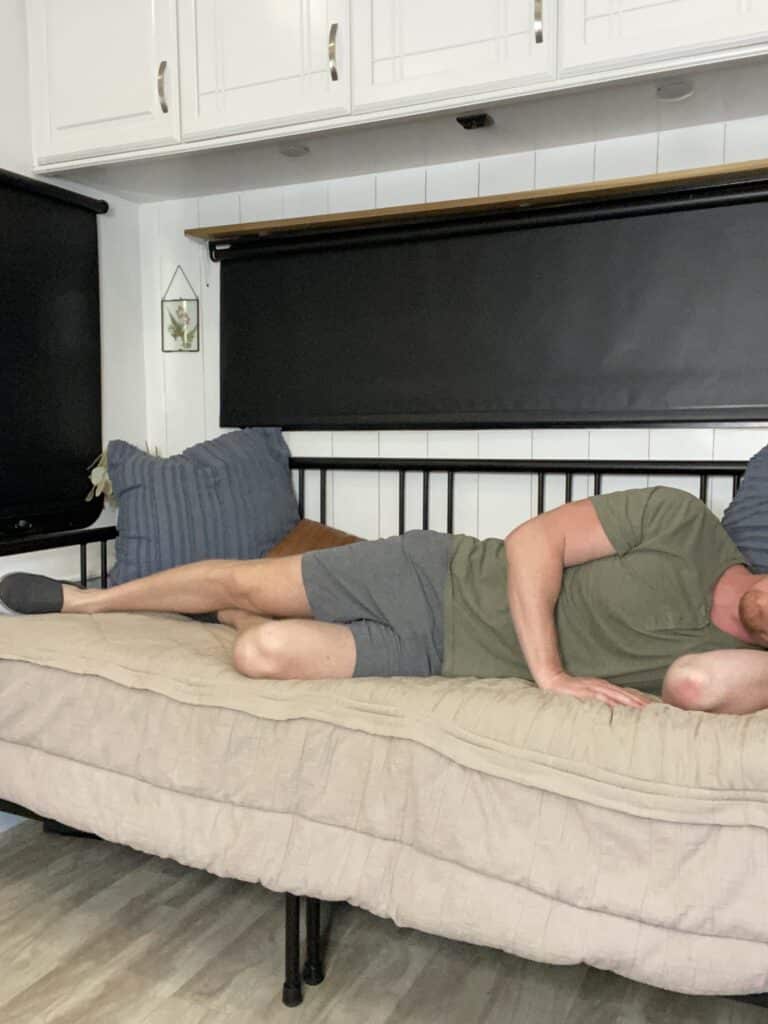
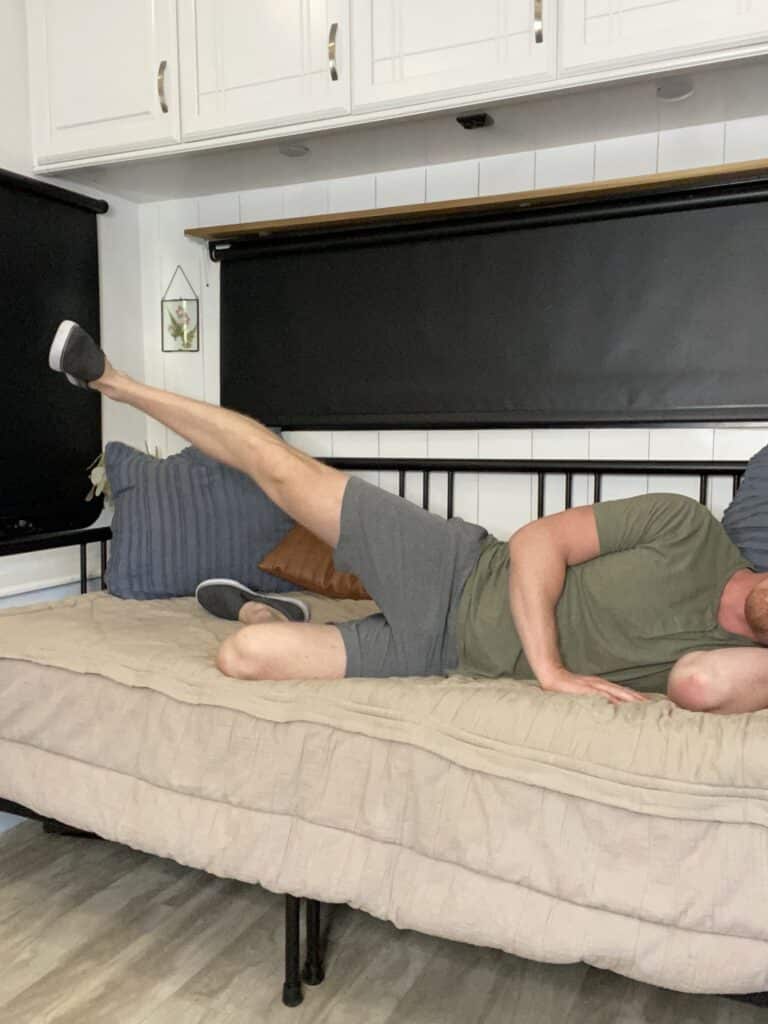
- Lie on your side with legs bent at a 90-degree angle
- Keep your feet and spine in line and your core tight
- Slowly raise the top leg to hip level
- Lower your leg back to starting position.
- Then repeat for 10 repetitions, 3 sets.
9. Single-leg Balance
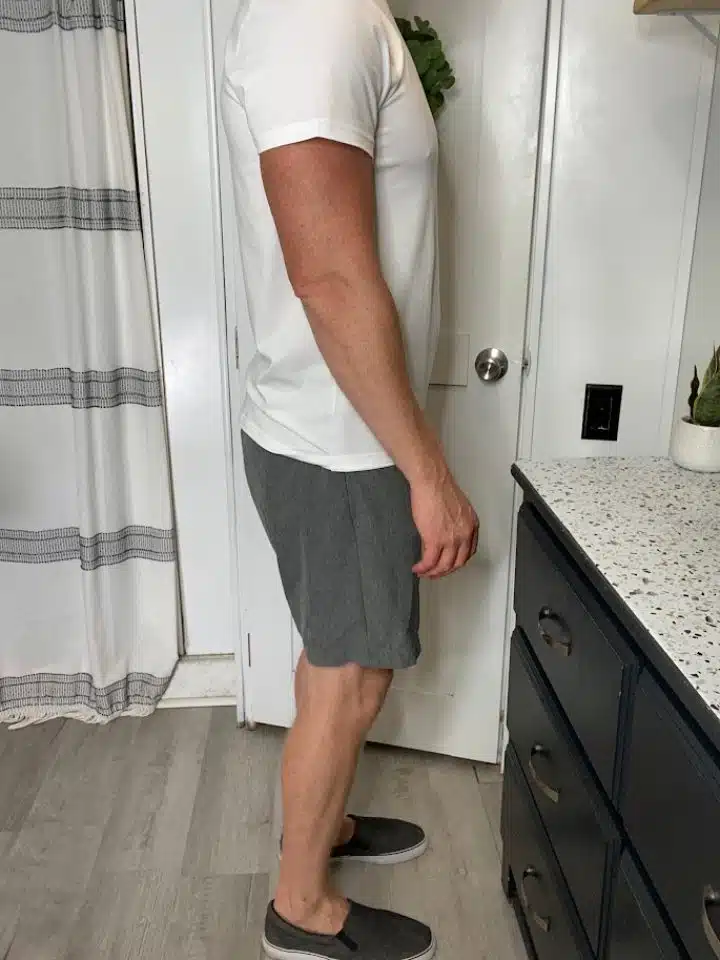
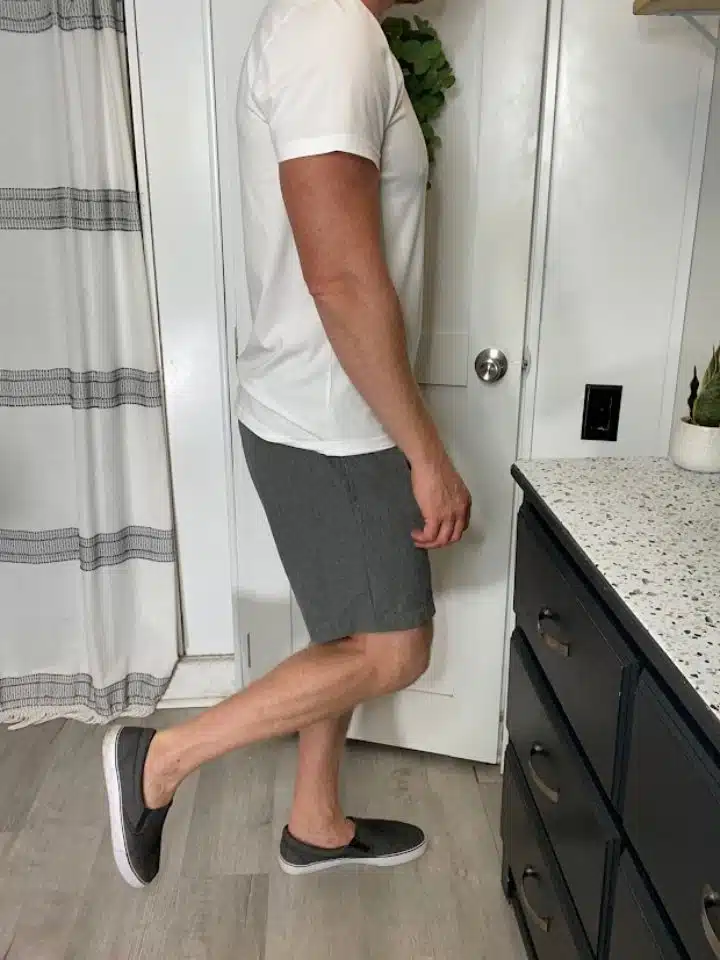
- Starting position: Standing in front of a sturdy surface like your countertop.
- Shift your weight onto the injured leg (avoid locking into the knee joint), picking the opposite foot up off the floor.
- Practice balancing for 30 seconds (you can use the counter for balance assistance as needed).
- Return to your starting position to take a break.
- Repeat 1-2 more times.
10. Heel Raises
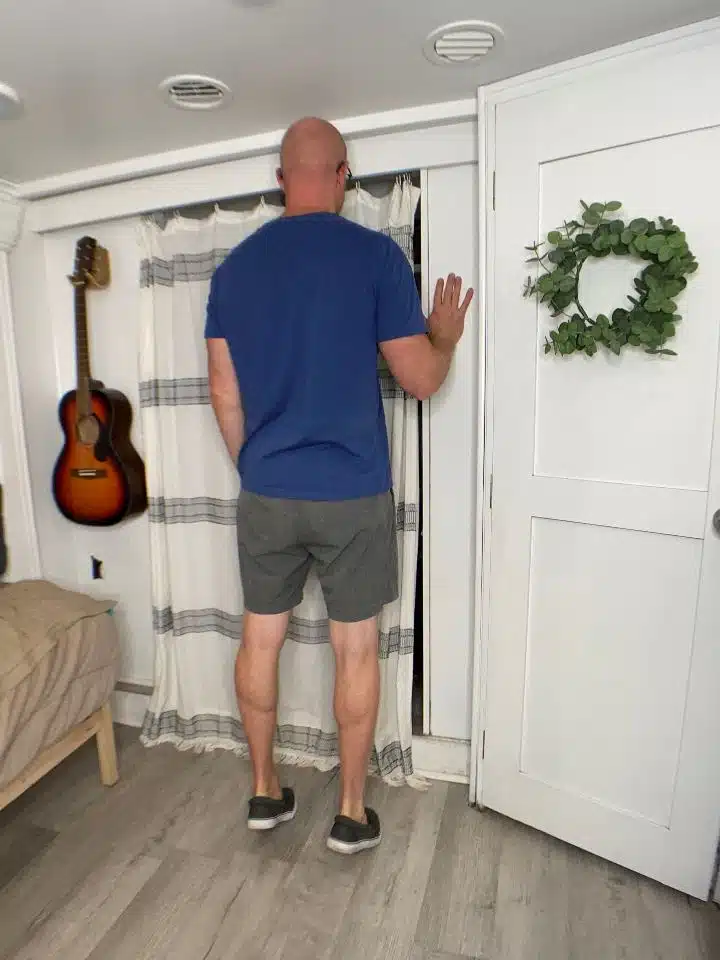
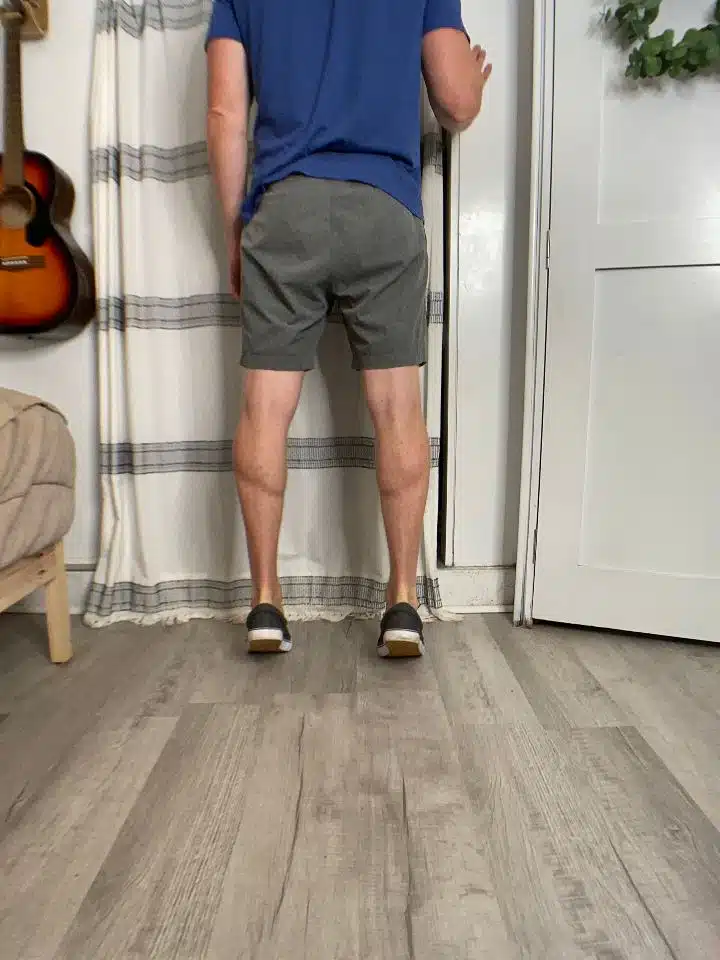
- Place the feet shoulder-width apart and stand with the legs straight.
- Lift both heels off of the floor at the same time, then slowly lower your heels down to the floor.
- Repeat 10 repetitions for 3 sets, as tolerated.
11. Standing Hamstring Curls
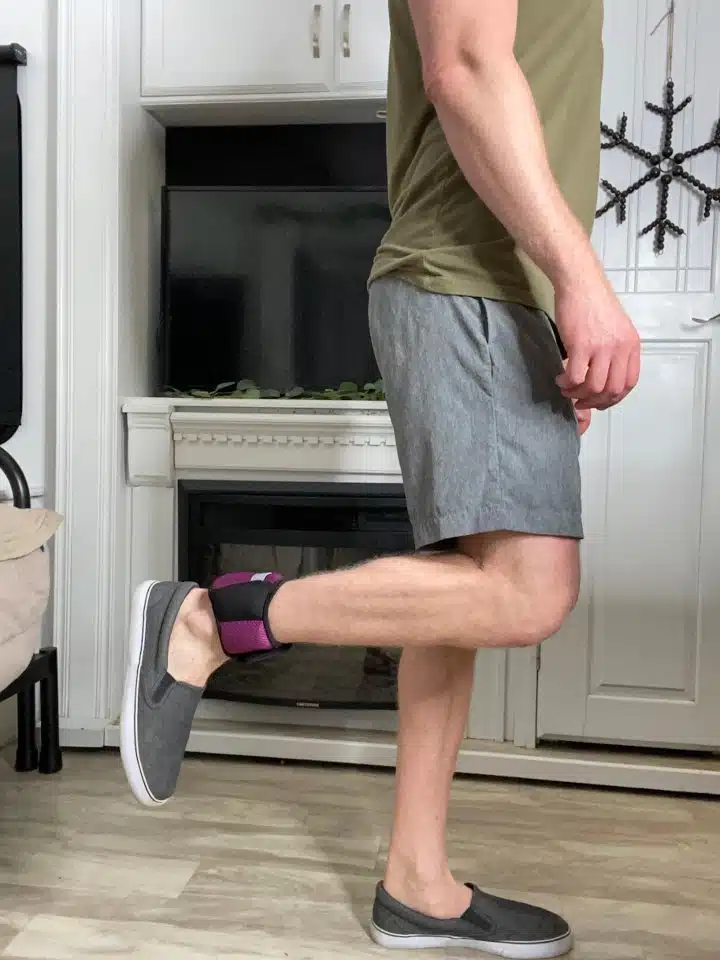
- Stand in front of a sturdy surface, such as a countertop.
- Bend one knee, allowing the foot to kick up towards the bottom.
- Return to your starting position.
- Make sure the thighs remain close together.
- Repeat 10x for 3 sets.
- Practice on both legs.
12. Standing Hip Lifts
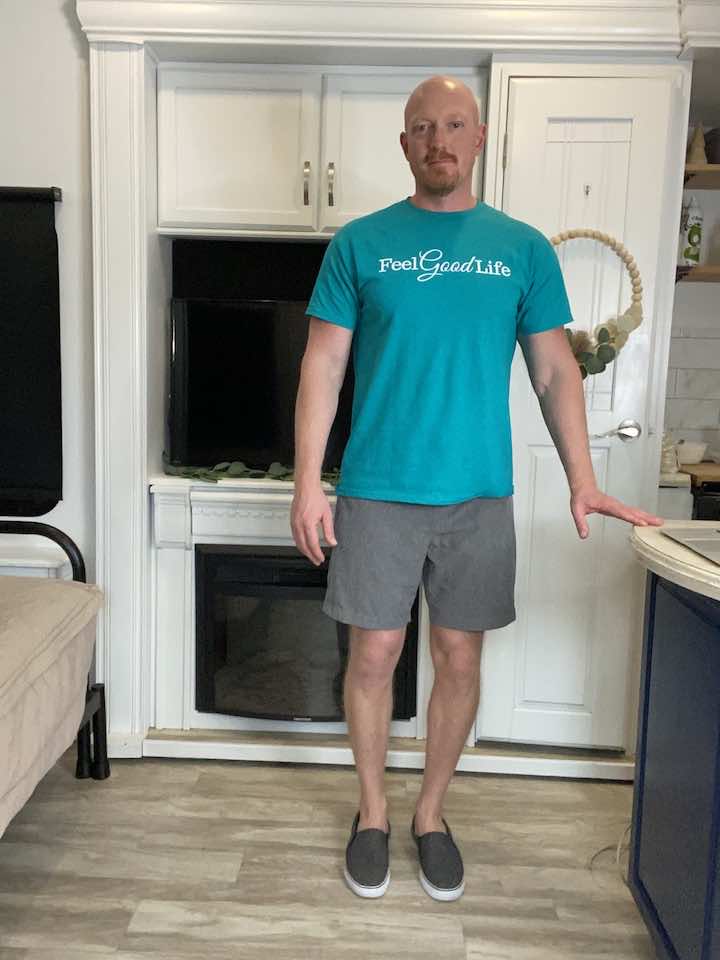
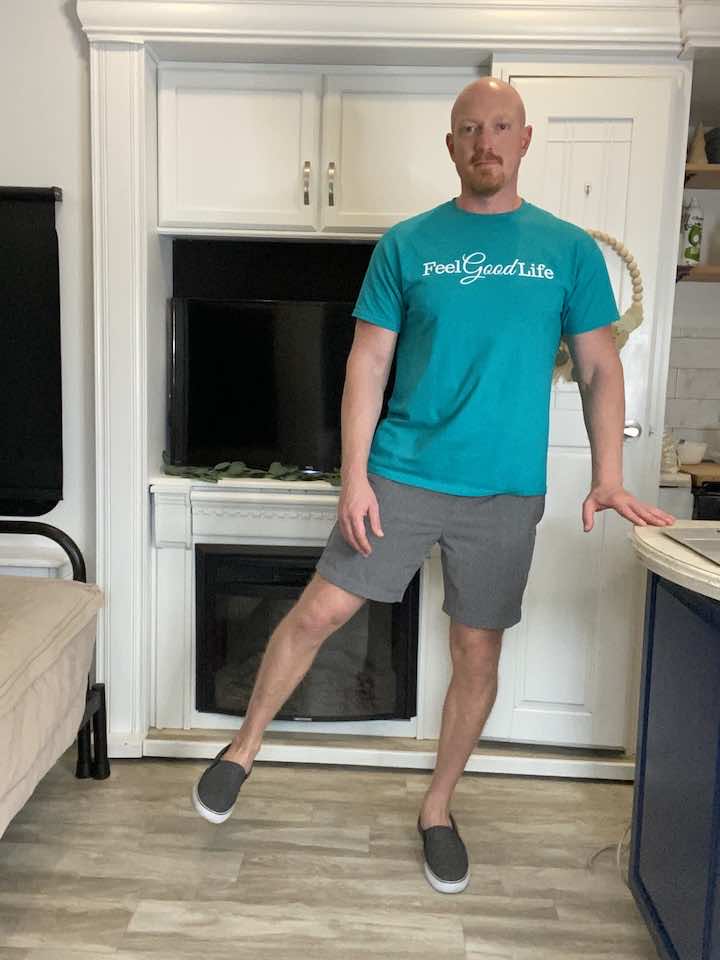
- Stand tall with one hand placed on a bed or chair. Balance on your left leg, keeping a soft bend in your knee to keep from locking out.
- Leading with your heel, lift your right leg out to the side. Be sure to avoid leaning to the left.
- Repeat 10 times per leg for 3 sets.
Conclusion
Pilates is an excellent exercise for anyone over 60 looking to improve their health and well-being. By incorporating Pilates into a daily routine and working with a certified instructor, seniors can improve their balance, flexibility, strength, and posture while reducing the risk of falls and injuries. With its many benefits and adaptability, Pilates is an excellent choice for seniors of all abilities and health conditions.


